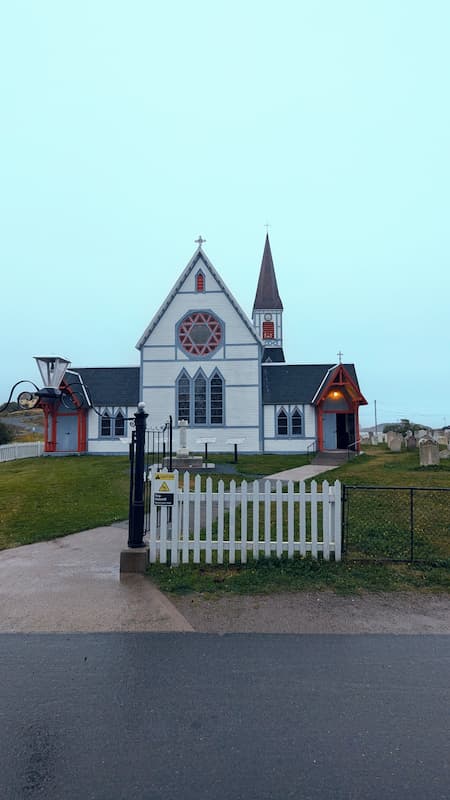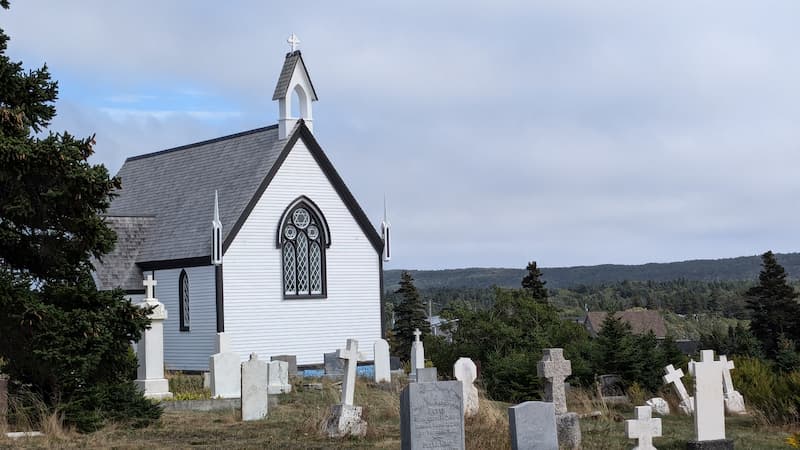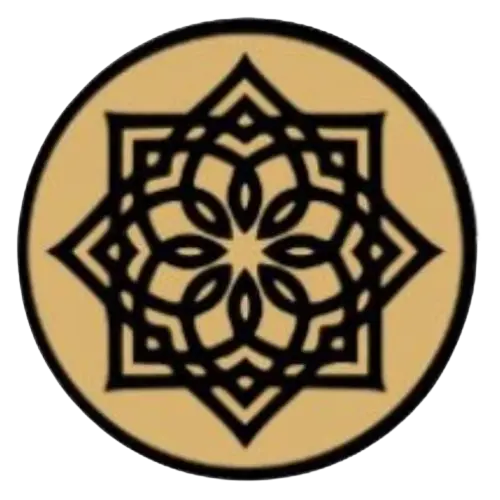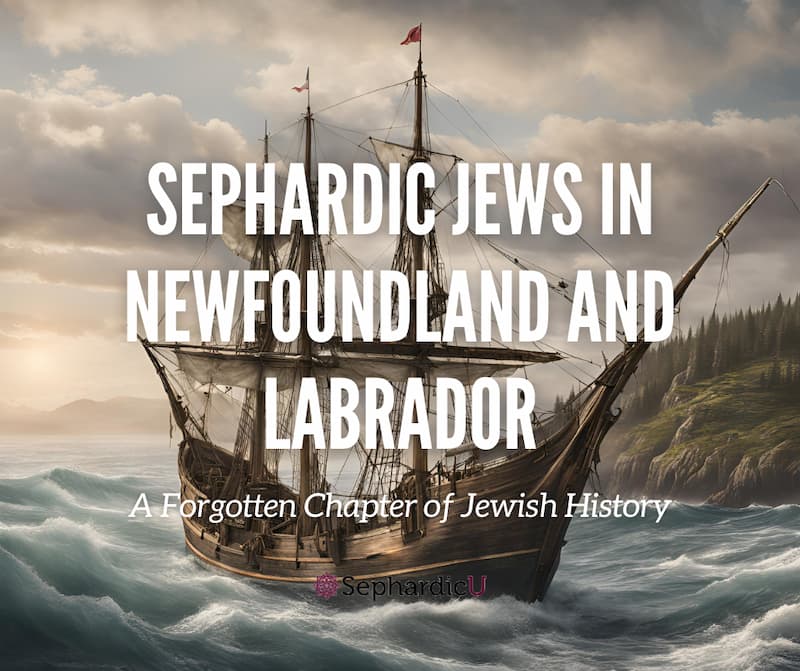Newfoundland and Labrador, the easternmost province of Canada, is renowned for its rugged coastline, rich maritime history, and diverse cultural heritage. One of the lesser-known yet significant aspects of this province’s history is the presence and impact of Sephardic Jews. Their contributions, though often overlooked, played a vital role in shaping the cultural and economic landscape of Newfoundland and Labrador.
Early Encounters: The First Jewish Connections
The earliest documented connection between Jews and Newfoundland dates back to 1677 when Joseph de la Penha, a Sephardic Jewish mariner from Portugal, was granted the deed to Labrador by the English crown. Although de la Penha never settled in the region, his claim marks the beginning of a Jewish connection to Newfoundland and Labrador. This early link illustrates the Sephardic Jews’ far-reaching influence even before their more substantial arrival in the region.
Simon Solomon: A Pioneer in the New World
One of the earliest and most significant figures in the history of Sephardic Jews in Newfoundland is Simon Solomon. Arriving in the early 19th century, Solomon was a merchant whose business acumen and dedication significantly impacted the local economy. Specializing in the salt fish trade, Solomon played a crucial role in establishing economic ties between the Jewish community and the broader Newfoundland economy.
Solomon’s contributions extended beyond commerce. As one of the few Jewish residents of Newfoundland at the time, he was pivotal in fostering a sense of community and maintaining Jewish traditions in a predominantly Christian environment. His influence is commemorated in St. John’s, where Solomon’s Lane, a small street, bears his name as a tribute to his impact.
The Broader Sephardic Influence and International Trade
While Simon Solomon was a key figure in Newfoundland, it is essential to recognize that his story is part of a broader pattern of Sephardic Jews who were pioneers in international trade. For example, Isaac Mendes, though not based in Newfoundland, was an influential Sephardic merchant who made significant contributions to international trade networks. Mendes’ efforts in establishing commercial ties between Jewish communities in different parts of the British Empire, including London and the Caribbean, reflect the broader role of Sephardic Jews in global commerce.
The Sephardic Jews’ ability to thrive in international trade required them to be exceptionally strong, brave, and adaptable. They undertook weeks-long ocean journeys to reach new lands, demonstrating remarkable resilience. Their success depended not only on their business acumen but also on their capacity to blend into new communities and establish themselves as respected merchants. This adaptability and determination were crucial in their ability to conduct business and integrate into diverse environments.
Insights from McGrath’s Research
Robin McGrath’s book, Salt Fish & Shmattes: A History of the Jews in Newfoundland and Labrador from 1770, offers an invaluable exploration of the Jewish community’s history in the region. McGrath, a poet, folk-historian, and archivist, combines archival records with meticulous research to illuminate the lives and contributions of early Jewish settlers in Newfoundland.
McGrath’s research highlights the challenges faced by the early Sephardic settlers, particularly those like Simon Solomon. Her work provides a comprehensive look at how these early settlers managed to maintain their cultural and religious practices despite the isolation of their new environment. The book also documents the gradual growth of the Jewish community, including later waves of Ashkenazi Jews from Eastern Europe, who further enriched the community with their traditions and practices.
The Growth and Challenges of the Jewish Community
The 19th and early 20th centuries saw a gradual expansion of the Jewish community in Newfoundland. The arrival of Jewish immigrants from Eastern Europe added to the Sephardic presence, bringing new customs and traditions. These new settlers played a significant role in various sectors, including the fish trade, which was crucial to Newfoundland’s economy.
Despite their relatively small numbers, the Sephardic Jews of Newfoundland were able to establish a robust community. The first synagogue in St. John’s, established in 1909, became a central hub for religious and communal life. This synagogue not only served as a place of worship but also as a gathering space where Jewish traditions were preserved and celebrated.
Legacy and Influence
The Sephardic Jews of Newfoundland and Labrador left an enduring legacy that is evident in the region’s history. Their contributions to the local economy, particularly through trade and commerce, were significant. Their ability to maintain their cultural and religious practices in a remote and challenging environment demonstrates their resilience and dedication.
McGrath’s Salt Fish & Shmattes provides a crucial perspective on this history, emphasizing the impact of early Jewish settlers and their role in shaping Newfoundland’s cultural and economic landscape. Her work ensures that the story of Sephardic Jews in Newfoundland is recognized and appreciated as an important chapter in Canadian history.
Today, the legacy of the Sephardic Jews in Newfoundland serves as a testament to their adaptability and perseverance. Their story, while less frequently highlighted, is an essential part of the broader narrative of Jewish history in Canada. The Sephardic Jews’ contributions to Newfoundland and Labrador are a reminder of the diverse and resilient nature of Jewish communities throughout history.
Side Note: The Star of David in Anglican Churches of Newfoundland
During a visit to Newfoundland in September 2024, Nathaniel Pool, founder of Sephardic U, made a surprising discovery regarding the architecture of some of the island’s oldest Anglican churches. In particular, two historic churches in the coastal towns of Bonavista and Trinity featured windows adorned with the Magen David (Star of David), a symbol traditionally associated with Judaism. This curious detail raises questions about potential Jewish influence on the church designs or whether these symbols were used as a way for individuals with Jewish ancestry to maintain and conceal their roots, possibly in response to persecution during both the Spanish and English inquisitions.


The presence of such symbols in Anglican churches may simply reflect a broader use of the six-pointed star in Christian art and architecture, where it has also been regarded as a symbol of divine protection. However, considering Newfoundland’s rich and diverse history of migration and settlement, it is intriguing to speculate whether these Magen Davids point to a more complex cultural interplay or hidden histories. Could these churches hold clues to long-forgotten stories of crypto-Jews who sought refuge in Newfoundland’s remote fishing villages?
We would welcome comments from anyone with deeper knowledge or theories regarding the Magen David’s inclusion in these Anglican churches. Any insight could help unravel this unique architectural mystery and contribute to our understanding of the broader cultural tapestry of Newfoundland. Send your comments here.









Ohr HaChaim Yomi – Emor